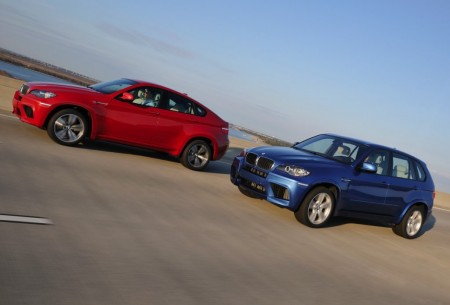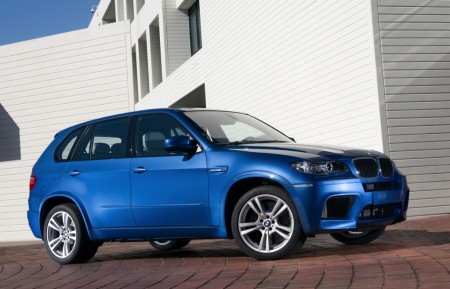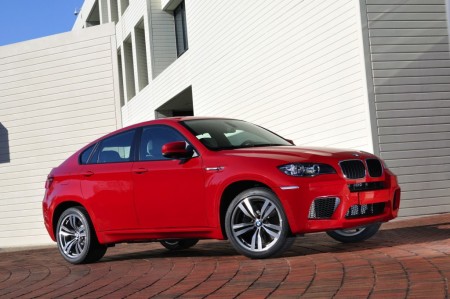
BMW originally refused to develop M versions of the X5, let alone the X6, because they said those were too big to be true sports cars. Of course, ideologies have changed over the years, and the money-chasing company has revealed the BMW X5 M and the BMW X6 M in time for the 2009 New York Auto Show.
The BMW X5 M and the BMW X6 M, to be released as 2010 models, are the first all-wheel-drive BMW M products. The hood, front air dam, and headlights are virtually identical on the BMW X5 M and X6 M. Both models feature special gills in the front fenders, as well as model-specific 20-inch light-alloy wheels. The rear diffuser and quad tailpipes of the exhaust system complete the back-end, with skirts along the sides.
Both models are powered by a newly-developed 4.4L V8 M engine delivering 555 hp at 6000 rpm and 500 lb-ft of torque from 1500 rpm to 5650 rpm. This new M engine is the world’s first with a “pulse-tuned” exhaust manifold for both rows of cylinders combined with twin-scroll twin turbo technology.

For the X5 M and X6 M, BMW’s xDrive all-wheel-drive system and the Dynamic Performance Control system were modified. The special M suspension includes Adaptive Drive and newly-developed Servotronic power steering.
Both models accelerate to 60 mph from a standstill in 4.5 seconds, and both vehicles are touted as having “superb balance through careful tuning” of xDrive, Dynamic Performance Control, and Dynamic Stability Control with M Dynamic Mode for “linear buildup of cornering forces.” Considering the excellent on-road capabilities of the existing X6 models, there are no doubts over these M versions.
Featured for the first time on a BMW M model, the 6-speed M Sports Automatic transmission is commanded by an electronic selector, with Sport and M Manual modes, as well as aluminum pull-style paddles on the steering wheel. Upshifts occur significantly quicker than in the past thanks to new technology that reduces torque in the transmission through momentary deactivation of individual cylinders. In the M Manual mode, each chosen gear is held up to redline. A further option in the M Manual mode is to activate the Launch Control feature, which enables the driver to accelerate from a standstill with maximum performance.

Beyond the stabilizing effects of Dynamic Stability Control provided by individual brake activation and engine power reduction under extreme conditions, DSC in the BMW X5 M and BMW X6 M includes a wide range of additional features tuned to BMW M standards. These include ABS, Trailer Stability Control, Hill Descent Control, Dynamic Brake Control which maximizes brake force when required, Cornering Brake Control for advanced trail-braking, Brake Fade Compensation for extreme driving conditions, automatic Brake Drying when the windshield wipers are activated, Start-Off Assistant for driving on steep hills, and a braking function for use by the standard cruise control. Both vehicles come with an electrohydraulic parking brake which features the Autohold function.
Both models feature standard self-leveling rear air suspension and Adaptive Drive with Electronic Damping Control (EDC) and Active Roll Stabilization (ARS). The special version of Adaptive Drive tailored to the requirements of BMW M lowers the entire vehicle by 10 millimeters or 0.4? versus the standard BMW X5 and BMW X6.
Giant four-piston fixed calipers at the front with floating calipers at the rear, combined with large internally-vented brake discs, have rotors measuring 15.6-inch in diameter at front and 15.2-inch at rear.
The BMW X5 M and the X6 M debuted at the 2009 NY auto show, and should hit showrooms by the end of the year.






























